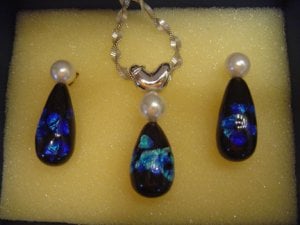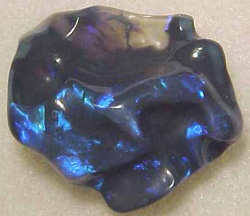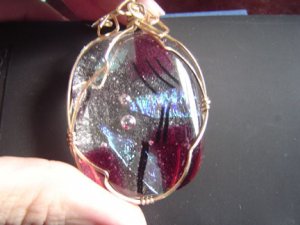- Joined
- Apr 6, 2005
- Messages
- 12,723
Since you were so helpful in identifying the stones on my last piece, I''m hoping someone [Widget, Richard M.?] can do the same for this set. It too, is from Japan. The earrings and necklace are pearls set on top of dark blue stones that have flecks of varying lighter blues in them. I wish this was a better picture. It just doesn''t capture the brightness of the blues. Anyone have any ideas on this one?


















300x240.png)